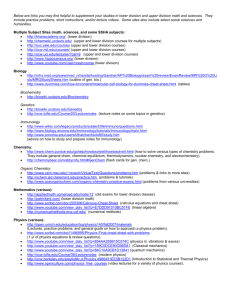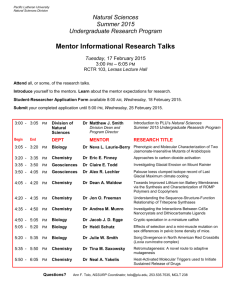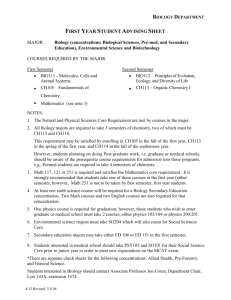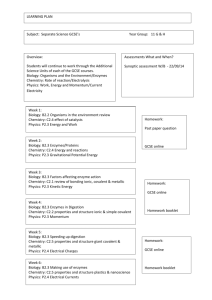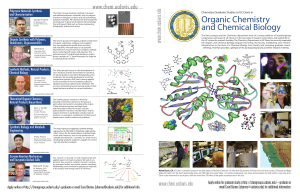Common Latin and Greek Roots in Biology Vocabulary
advertisement
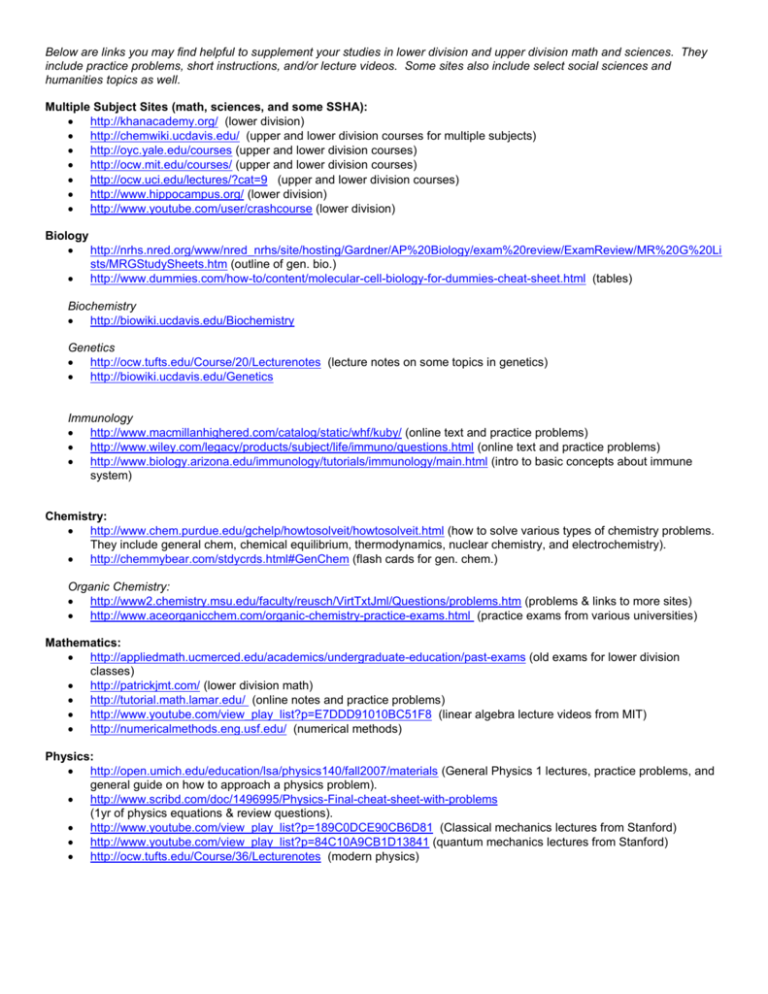
Below are links you may find helpful to supplement your studies in lower division and upper division math and sciences. They include practice problems, short instructions, and/or lecture videos. Some sites also include select social sciences and humanities topics as well. Multiple Subject Sites (math, sciences, and some SSHA): http://khanacademy.org/ (lower division) http://chemwiki.ucdavis.edu/ (upper and lower division courses for multiple subjects) http://oyc.yale.edu/courses (upper and lower division courses) http://ocw.mit.edu/courses/ (upper and lower division courses) http://ocw.uci.edu/lectures/?cat=9 (upper and lower division courses) http://www.hippocampus.org/ (lower division) http://www.youtube.com/user/crashcourse (lower division) Biology http://nrhs.nred.org/www/nred_nrhs/site/hosting/Gardner/AP%20Biology/exam%20review/ExamReview/MR%20G%20Li sts/MRGStudySheets.htm (outline of gen. bio.) http://www.dummies.com/how-to/content/molecular-cell-biology-for-dummies-cheat-sheet.html (tables) Biochemistry http://biowiki.ucdavis.edu/Biochemistry Genetics http://ocw.tufts.edu/Course/20/Lecturenotes (lecture notes on some topics in genetics) http://biowiki.ucdavis.edu/Genetics Immunology http://www.macmillanhighered.com/catalog/static/whf/kuby/ (online text and practice problems) http://www.wiley.com/legacy/products/subject/life/immuno/questions.html (online text and practice problems) http://www.biology.arizona.edu/immunology/tutorials/immunology/main.html (intro to basic concepts about immune system) Chemistry: http://www.chem.purdue.edu/gchelp/howtosolveit/howtosolveit.html (how to solve various types of chemistry problems. They include general chem, chemical equilibrium, thermodynamics, nuclear chemistry, and electrochemistry). http://chemmybear.com/stdycrds.html#GenChem (flash cards for gen. chem.) Organic Chemistry: http://www2.chemistry.msu.edu/faculty/reusch/VirtTxtJml/Questions/problems.htm (problems & links to more sites) http://www.aceorganicchem.com/organic-chemistry-practice-exams.html (practice exams from various universities) Mathematics: http://appliedmath.ucmerced.edu/academics/undergraduate-education/past-exams (old exams for lower division classes) http://patrickjmt.com/ (lower division math) http://tutorial.math.lamar.edu/ (online notes and practice problems) http://www.youtube.com/view_play_list?p=E7DDD91010BC51F8 (linear algebra lecture videos from MIT) http://numericalmethods.eng.usf.edu/ (numerical methods) Physics: http://open.umich.edu/education/lsa/physics140/fall2007/materials (General Physics 1 lectures, practice problems, and general guide on how to approach a physics problem). http://www.scribd.com/doc/1496995/Physics-Final-cheat-sheet-with-problems (1yr of physics equations & review questions). http://www.youtube.com/view_play_list?p=189C0DCE90CB6D81 (Classical mechanics lectures from Stanford) http://www.youtube.com/view_play_list?p=84C10A9CB1D13841 (quantum mechanics lectures from Stanford) http://ocw.tufts.edu/Course/36/Lecturenotes (modern physics) Scholarship, Internship Info: http://www.fastweb.com/ http://uroc.ucmerced.edu/ http://www.phds.org/ Med School Data – https://www.aamc.org/data/facts/ Study Guides and Tips http://www.princeton.edu/mcgraw/library/for-students/ Common Latin and Greek Roots in Biology Vocabulary Students in introductory biology classes typically have to learn more new vocabulary words than students taking a foreign language! The good news is that many science vocabulary words use the same Greek and Latin roots. This table shows you many roots to help you decipher words you hear in biology class. Greek or Latin Root Meaning A-, An- Not, absent Ab-, AbsAlloAquaBiBio-cide Cyt DiDisEndoEpiEuEx- HeteroHomoHyperHypoInterIsoLocus Macro-meter MicroMonoOligPed-, Pod Away from Another Water Two Life Kill Cell Two Apart Inside Upon, over True Out Give birth, beget Mixed, unlike Same Above Below Between Same Place Big Measure Small One Few Foot Phago- Eat -phil -phobia PolyProStomZooZygo- Love Fear Many Before Mouth Animal Join Geno- Examples Abiotic: without life Anoxygenic: without oxygen Abscission: separation of leaves from tree Allosteric: another binding site Aqueous: watery Bilayer: double layered Biology: the study of life Bacteriocidal: kills bacteria Cytoplasm: the fluid inside a cell Disaccharide: a carbohydrate made of two simple sugars Disjoin: separate Endocytosis: a process that brings things into a cell Epidermis: the uppermost layer of tissue covering an organism Eukaryotes have a true nucleus Exocytosis: a process that puts things out of cells Genetics: the study of heredity Heterozygous: a cell that has two different versions of a gene Homozygous: a cell that has two identical versions of a gene Hypertonic: has a greater concentration of solutes Hypotonic: has a lower concentration of solutes Interphase: the cellular phase between cell divisions Isotonic: has same concentration of solutes A locus on a chromosome is the place where a gene is located Macrophage: a large phagocyte Centimeter: a measurement that's 1/100 of a meter Microbiology: the study of living things too small to see with the naked eye Monosaccharide: a single simple sugar Oligosaccharide: a short chain of sugars Pseudopod: a "false foot" or projection of an amoeba Phagocytosis: a process where a white blood cell engulfs and destroys bacteria and viruses Hydrophilic: mixes well with water Hydrophobic: doesn't mix with water Polypeptide: a chain of many amino acids Prokaryotes: cells that evolved before nucleated cells Stomates: openings in the surfaces of leaves Zoology: the study of animals Zygote: a cell formed from the joining of sperm and egg
